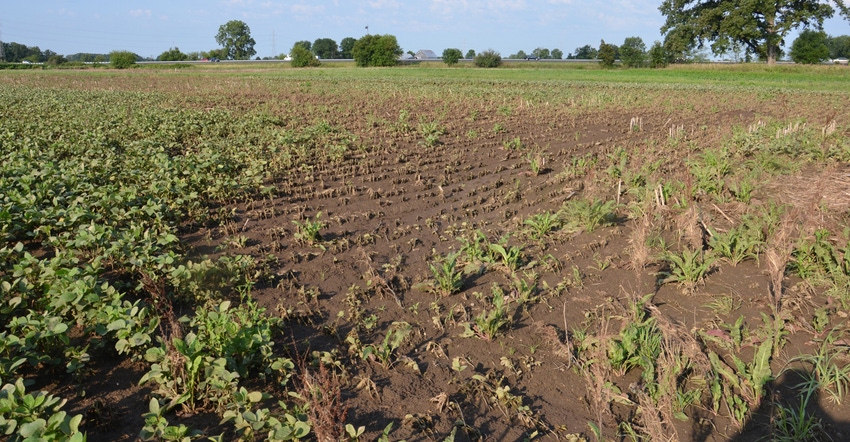October 2, 2019

By Clint Harrison, Don Donovan and Brian Musser
What can you learn about your soils during harvest? Did the combine bounce over gullies or sedimentation bars? Did you have to go around severely eroded areas? If your fields are eroding with an actively growing crop, what will fall and winter leave behind for spring planting? What are options to address these issues?
Erosion control is just one benefit of crop residue. When spread evenly across the full width of the combine header, residue acts as a blanket or armor and helps lessen the impact of raindrops on the soil surface. It also increases infiltration and reduces concentrated flow runoff that causes gullies.
Cover crops
Erosion control is also one of many benefits of seeding cover crops. Cover crops protect the soil by providing ground cover and roots needed to keep soil in place. Cover crops used in a long-term no-till system will improve aggregation of soil particles, thereby improving infiltration. Soil organic matter levels will start to improve, building a more resilient soil that will not be as susceptible to erosion.
A cover crop mix for erosion control should contain a grass species such as oats, cereal rye, barley or annual ryegrass. If you’re concerned with spring erosion, an overwintering species such as cereal rye or annual ryegrass is best if you’re comfortable with termination before planting.
Other species such as brassicas and legumes should be included to provide other benefits. Brassicas help with leftover nutrient uptake and battle soil compaction. Legumes provide nitrogen production for the following cash crop, and if left to flower, provide food for beneficial insects.
If you’re not ready to plant the entire field to a cover crop, smoothing up eroded areas and planting wheat or rye there can make a tremendous difference in erosion control. Make note of areas of concern and follow up harvest by seeding these areas before winter.
Where soil erosion is severe, some farmers experienced in the use of cover crops are trying intercropping — planting a cover crop during sidedress between the V3 and V7 growth stages. Planting between these growth stages has minimal effect on yield and still allows for postemergence herbicide applications before the cover crop germinates.
Cool-season cover crop species germinate before the corn crop canopies and then go dormant during the heat of the growing season before actively starting to grow again at harvest. There’s even potential to provide nitrogen if legumes such as medium red clover or crimson clover are planted.
Erosion control options
Increasing residue cover by reducing tillage is a good starting point. Crimping a cover crop for residue at planting further armors the soil surface. But residue is not the same as actively living plants and is still subject to runoff during heavy rain events.
If soil erosion in your fields is an issue during harvest this fall, or if you found it from this spring or summer, consider using cover crops. Start with your fields that seem to erode the most. Cover crops just might make for a smoother ride in 2020!
Harrison, Donovan and Musser are district conservationists with the Natural Resources Conservation Service. They write on behalf of the Indiana Conservation Partnership.
You May Also Like




